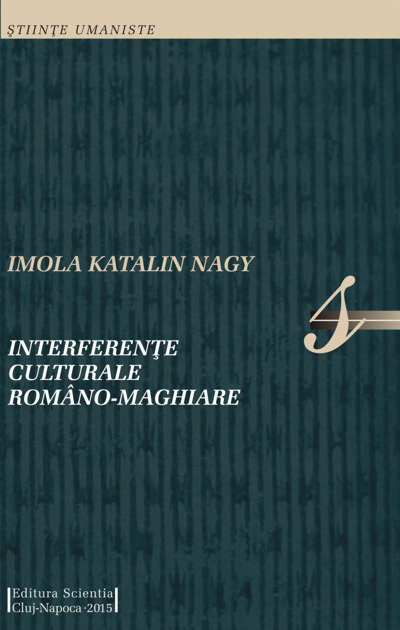INTERFERENŢE CULTURALE ROMÂNO-MAGHIARE
Romanian–Hungarian Cultural Parallelisms
Author(s): Imola Katalin Nagy
Subject(s): History, Language and Literature Studies, Cultural history, Applied Linguistics, Studies of Literature, Sociolinguistics, Hungarian Literature, Romanian Literature
Published by: Scientia Kiadó
Keywords: literary and cultural paraellisms; intercultural communication; inter-war period; Transylvanianism; Romanian and the Hungarian cultural discourse;
Summary/Abstract: This volume focuses on the problem of literary and cultural paraellisms between the Romanian and the Hungarian cultural and literary phenomena. Beyond some general aspects related to the topic, the first part is dedicated to the problem of intercultural communication between the Romanian and the Hungarian cultural milieu in the inter-war period, with a special emphasis on the issue of Transylvanianism. We try to identify the reasons for which this ideology failed to become one of the main facilitators of open communication between the Romanian and the Hungarian cultures. We also hint at some contemporary echoes of Transylvanianism and the changes that have occurred over the past few decades. We wanted to make a presentation of the main regional ideologies of the Transylvanian cultural and spiritual life in the inter-war period. The Hungarians’ Transylvanianism and the Romanians’ creative localism or ardelenism alike offered a wide range of key concepts and ideas that shaped/and were shaped by the cultural context of the time. Both regionalisms – Romanian and Hungarian – shared many of these concepts and ideas, although they had never really sustained an open and efficient communication, due to a series of causes. The shifts that occurred in the self-defining strategies, the communication breakdowns that characterized the relationships between the two cultural milieus and intellectual circles, the identity discourses that can be spotted in the media of that time, and the movement known as Transylvanianism are all approached with the purpose of identifying the causes that hindered (and perhaps still hinder) real and efficient communication between Romanians and Hungarians. We also attempt to offer an overview of the effects of the cultural and spiritual flourishing that marked the turn-of-the-century Vienna on the Romanian and the Hungarian cultural discourse. We focus on the most important phenomena that the Romanian and the Hungarian cultural discourses borrowed from the Viennese modernity at the turn of the century. Among these, one can cite the types of writers, literary topics (such as the theme of the Family, of strong women, the emergence of the human psyche in literature, the figure of the estranged, etc.). The second part of the volume is dedicated to the most important thematic parallelisms between the Hungarian and the Romanian prose writings, by analysing topics and/or motives like war, womanhood, wealth, freedom and the symbolism of the mountain, etc.
Series: Sapientia Könyvek
- Print-ISBN-13: 978-973-1970-89-9
- Page Count: 336
- Publication Year: 2015
- Language: Romanian
- eBook-PDF
- Table of Content
- Introduction

